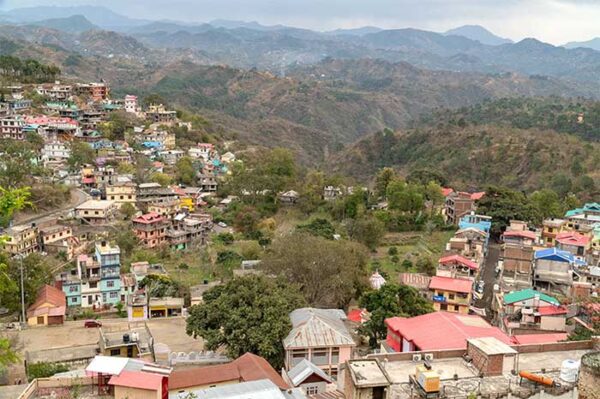British Connection
A Brief History
Of Lawrence School,
Sanawar
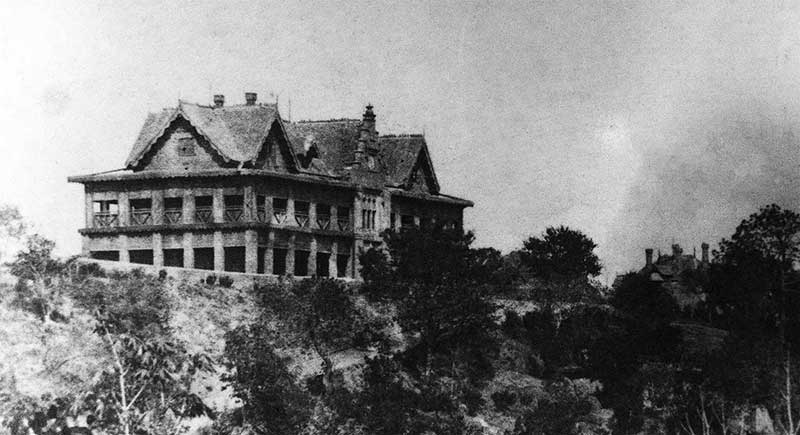
Henry Lawrence wanted to build an asylum for the orphans of European soldiers. He finished up creating a legacy…
The Lawrence School, Sanawar: From a School for Orphans to the School for Rich Kids | Video
It was not Kasauli, even Sanawar, but Mussoorie where the Lawrence school, Sanawar was meant to be started.
More than 175 years ago, in the early 1840s, when British military officer Henry Lawrence started planning a school or an educational institution for the orphaned children of European soldiers in India, his first choice of location was Mussoorie.
Lawrence had first proposed the school, in 1845, then called asylum, to be built in Mussoorie when he was posted in Nepal. According to Life of Sir Henry Lawrence, in a letter written to Colonel Stuart, Secretary to Government Military department, on July 22, 1845, Lawrence had proposed that “Different hill stations have been suggested for the site of the institution. It, however, appears to me that the asylum should be in the vicinity of one of the established sanataria, both that the public should be able to visit and inspect the establishment and for the advantage of medical aid. A low site, about 5,500 feet high, somewhere in the rear of the centre of Mussourie, would, I consider, combine most advantages as a retired position, suitable to all seasons, and within reach of local authorities.”
Kasauli hills come into view
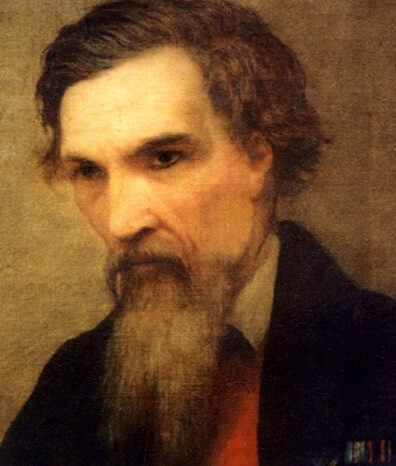
But within the next one year, he had changed his mind as Mussoorie was too far off from any European station.
In an amended proposal on starting the asylum, Herbert Benjamin Edwardes, a British military officer who worked under Lawrence, pointed out that Kasauli hills were more feasible than Mussoorie, “The funds of the proposed Hill Asylum for the children of European soldiers having now accumulated into a sum sufficient to start the institution, the requisite building work will begin soon as the rains are over. Mussoorie being thought too far away from any European station, a site near the Fir Tree Bungalow, between Soobathoo and Kussowlee, will most probably be selected.
Moreover, Lawrence wanted the asylum to be under his jurisdiction. In a letter, Lawrence says that “My object being to have the asylum within my own jurisdiction, the cis-Sutlej States being under me as resident at Lahore; Mussoorie was not so.”
An asylum for the rescued children
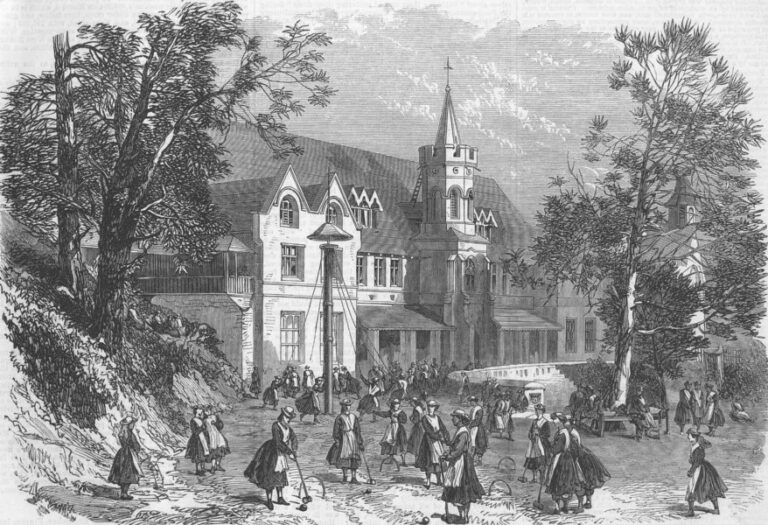
Lawrence had been planning an asylum for orphaned children at least since 1842 when he had proposed to George Russell Clerk, who served as political agent in Ambala, the establishment of a European free school in Kasauli.
But this plan couldn’t take shape.
According to Life of Sir Henry Lawrence, in his proposal to Colonel Stuart in 1845, Lawrence said that he had long considered opening such an asylum, “He (Clerk) entirely approved of the suggestion, but his illness and my own departure frustrated that scheme. I mention these points to show that I have long considered the subject.”
The thought of opening an asylum for the education of orphaned children must have come after witnessing their condition especially of girls in the military barracks where they grew up in India. With an aim to “rescue children from the heat and danger (both physical and moral) of barrack-life in the plains and give them a home in the hill,” Lawrence emphasized in the same proposal as to why he wanted to set up an asylum, “It may, however, be necessary for me to state that my proposal is no sudden freak of wild enthusiasm, but the sober result of long acquaintance with the condition of barrack children, especially of the degradation of girls.”
Lawrence had proposed that the institution would start with a girls’ asylum having 100 children and depending upon funds, a boys’ asylum would be built: “The establishment to commence with a girls’ asylum, to the extent of 100 orphans in excess of paying children; and then, according to the extent of funds in hand, a boys’ establishment to be commenced on, within a reasonable distance of the female asylum.”
Cost: Rs 10 per child
Lawrence had calculated the cost of each child as Rs 10 per month at the school and donated Rs 5,000 and contributed annually a sum of Rs 1000.
“I calculate that those who pay will cost the institution very little extra; and that, after a fair start has been made, the expense of each free scholar will not average above 10 rupees per month, or 7 in excess of the Government allowance,” wrote Lawrence.
Maharaja Gulab Singh extends help
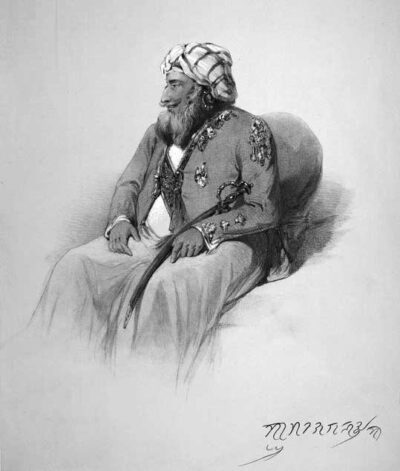
A big monetary help for building the asylum came from Maharaja Gulab Singh of the princely state of Jammu and Kashmir. He offered Lawrence Rs 1 lakh for the asylum in November, 1846.
But Lawrence did not accept the money immediately. When the offer was repeated, Lawrence accepted the help as he mentioned this in a letter, “Maharajah Goolab Sing offered me a lakh of rupees for the asylum. I told him that if he still wished to give the money after an interval of a twelve month, to inform me by letter, and I would ask for Government sanction. Two or three times within the year the offer was repeated, and eventually I asked and obtained sanction. The money was at once funded, and still remains so. It is our only capital.”
Sanawar, not Kasauli, selected
So the search for the ideal location began in the ‘hot weather of 1846.’ Lawrence in his search was accompanied by Colonel Boileau and Lieutenant Becher of the Engineers wing, and Lieutenant William Stephen Raikes Hodson of the Fusiliers regiment.
Lawrence and his team “searched for a site around Kussowlee, and on the Fir Tree Ridge in the old road to Soobathoo.” They had almost decided on Kasauli but eventually selected Sanawar due to its isolation, availability of water, good weather and closeness to the nearby military cantonments of Sabathu, Kasauli and Dagshai.
“We nearly fixed on a spur of the Kussowlee Hill, but eventually selected the Hill of Sanawur as it combined most of the requisites for an asylum, viz. isolation, with ample space, and plenty of water, at a good height, in a healthy locality and not far from European troops. The selection was most fortunate, and I doubt not I owe it to my companions,” wrote Lawrence in a letter.
Construction starts with Hodson in charge


And soon after the site was fixed on a land of about 100 acres which belonged to the Baghat state, the work on the school buildings began under the care of Lieutenant Hodson, who was appointed secretary of the upcoming asylum. Hodson was friend of Lawrence and stationed in Sabathu with the Ist Fusiliers in those days. He later became known as “Hodson of Hodson’s Horse” for raising and commanding a cavalry regiment.
In The Life of Hodson of Hodson’s Horse, Captain Lionel J Trotter writes, Hodson supervised 600 workers during the construction of the asylum building: “As secretary to the new asylum, William Hodson in the spring of 1847 entered into a strange new world of multifarious labours and responsibilities.”
About his days in Sanawar, Hodson wrote to his friend FA Foster, “Since the 1st of April, I have been deeply engaged in building and superintending the starting of an asylum for European soldiers’ children in the hills. Throughout the summer I have had the sole direction of some 600 workpeople, besides keeping accounts and answering inquiries and letters from all parts of the country, in my capacity of secretary.”
“I have gone to the forest and selected trees from the wood, and when cut down, shown the carpenters how to cut planks from them, and then to make them into doors and windows. At other times I have made moulds for bricks and pointed out their use; or marked out rocks in the quarry, to be subdued by the chisel and hammer,” writes Hodson in the letter.
Asylum opens
While the construction work was on, the Lawrence school, then called military asylum, was opened in March, 1847 under the charge of the wife of Colonel George Lawrence, the elder brother of Henry Lawrence, with 23 children, 17 of them sent from Lahore by Lawrence.
George Lawrence’s wife headed the asylum till the winters of 1847 and in February 1848, William Parker became the first headmaster.
In 1852, the land occupied by Lawrence Military Asylum, was taken over by the British government from the state of Baghat, which from 1849 to 1861 was considered as a lapse, in the absence of heirs. The government took complete control of the asylum in 1858 following the Indian mutiny in 1857. In 1883, the school had 235 boys and 186 girls as students.
The most important lesson
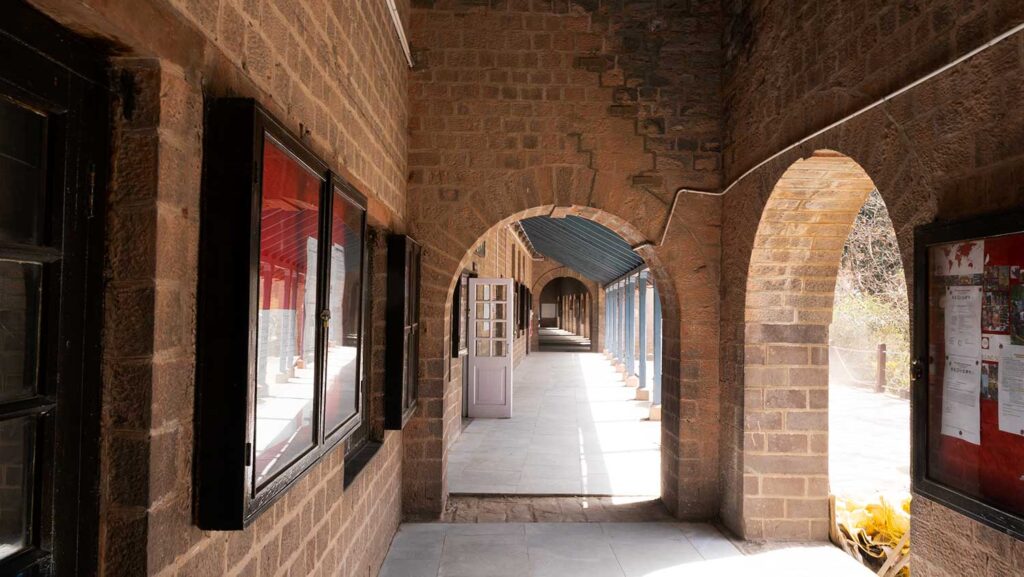
A year before Henry Lawrence was killed in Lucknow during the mutiny, He wrote in a letter in 1856: “I wish each boy to learn the use of his hands at some trade. I don’t care what it is. Let him cobble, carpenter, tailor, or smith. Boys must be taught not to be ashamed to put their hands to anything; to consider labour as honourable, and to see the advantage to themselves of being handy.”
References
Life of Sir Henry Lawrence by Herbert Benjamin Edwardes and Herman Merivale (1872)
The Life of Hodson of Hodson’s Horse by Captain Lionel J Trotter

